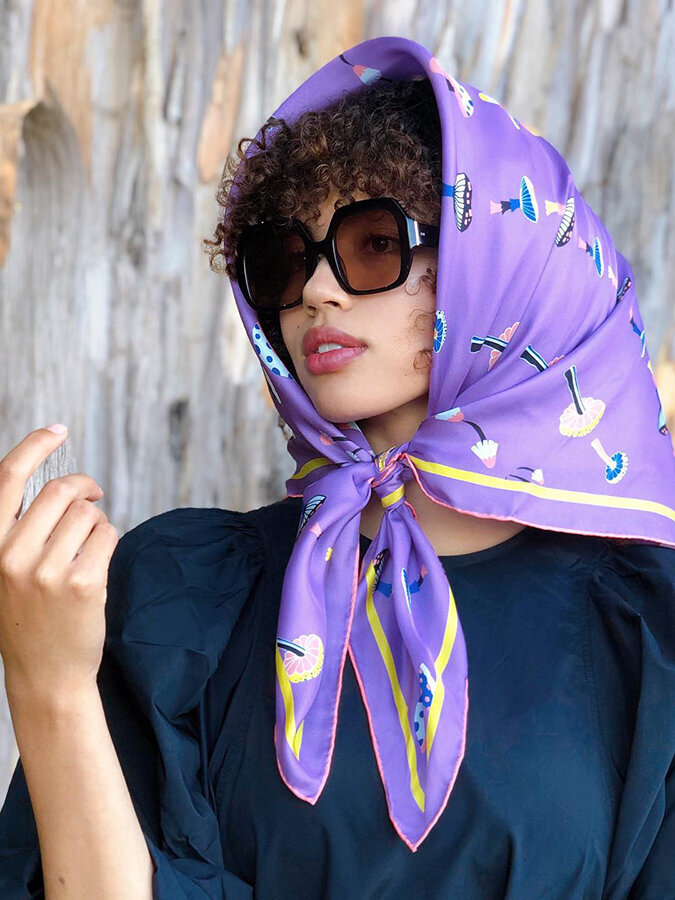If you’re looking for Custom Printed Silk scarves, you’ve come to the right place! You’ll find information on finding the right Silk Scarf Printers, the Pretreatment process, fabrics, and pricing in this article. Continue reading If you’re interested in printing silk scarves.
Custom Printed Silk Scarf Printers
When you’re looking to design a custom silk scarf, the best option is to use a digital printer. With this type of printer, you upload an art design and enter its dimensions. It is then possible to customize your design with tools such as tile and repeat. It has industry-standard resolution and can produce up to 120 m2/h of printing in a single step. Most custom-printed scarves are made with digital printing technology.
You can design a single scarf or create a collection with many different designs, but extreme variety may come with an extra fee. Print a swatch of 15×20 cm of printed silk to determine the exact design. Most scarves are hard-wearing, but the material is soft to the touch and allows the pattern to shine through on both sides.
Silk is made from the larvae of various insects. The most famous type of silk is produced by the mulberry silkworm Bombyx mori. After the larvae have emerged, they are spun into silk yarn. This yarn is woven into silk fabric. The fabric is renowned for its shimmering look due to the fiber’s triangular prism-like structure, which allows light to reflect off it. The most popular type of silk is the 100% silk twill.
If you’re thinking about creating your bespoke silk scarf, you’ll be glad to learn that these scarves are also 100% natural silk. Whether your first scarf design or your third, custom silk scarves make excellent gifts. Many professionals order a few pieces of custom scarves to test the concept before they invest in bulk production. This way, they can determine whether or not they like it and proceed from there.
Pretreatment process
One of the most important steps in silk scarf printing is the pretreatment process. It involves coating the fabric with a chemical mix that stiffens it and allows the ink to adhere. Reactive inks are used for this process; they are quick to dry and insanely accurate. The CMYK ink set translates artwork into millions of small drops. After the ink is applied, the fabric goes through a steam chamber, which opens the fiber’s cells. The resulting print has the highest color depth and vibrancy.
In the past few years, the quality of t-shirts has declined. However, with the advent of digital printing, it has become easier than ever to print on silk scarves. The best part is that they are fully washable! Silk scarves are no exception. An arrow motif machine uses a pretreatment process that helps retain the silk’s hand even after it has been dyed.
Acid dye inks are soluble acid dyes in water. They require a pretreatment process to properly set the ink and get a good open time. In addition, to avoid fading and reducing the lifespan of the print, acid dye inks should be used on fabric that has been pretreated. The pretreatment process will increase the colorfastness of the finished print and reduce the need for post-print steaming.
The degumming process removes sericin from the silk before dyed or printed. The sericin content in raw silk is approximately 20 percent. The degumming process also improves the sheen and color of the silk. The resulting fabric will have a smooth texture and feel. The degumming process should remove the sericin, which gives silk fibre an additional body and makes it easier to handle.
After the dyeing process, the fabric is bleached. Bleaching removes natural coloring pigments from the silk. It is a chemical process based on the use of reducing agents. Bleaching uses hydrogen peroxide as its bleaching agent. Hydrogen peroxide is used to remove the dye, which helps the fabric become more durable and wearable. It also ensures that the print will hold up over time.
Fabrics
There are many benefits to using Silk scarf printers to create your custom-designed scarves. Using high-quality reactive inks, they are durable and can be worn and resold. Reactive printing involves several steps, including pretreating the fabric, printing, and steaming. The print is then carefully removed and washed. The result is a unique, high-quality scarf. Read on to find out more about the printing process.
Most models start with a dozen scarves and scale to your desired quantity. Silk scarf printers can accommodate multiple designs and patterns, but ordering an extreme variety is rarely a good idea. A silk swatch of printed silk 15x20cm is recommended for small orders. Printing graphic designs are easier, so you might want to avoid complex patterns. A quick shipping time will ensure that your scarf arrives on time. You can also order several hundred scarves to experiment with different designs.
Before printing, silk needs to be treated with a special coating. This is necessary, so the ink will be able to absorb the color and accept the crimp. You can employ an external fabric finisher who will coat the silk for you, then calibrate the printer. Ensure you get the right amount of ink and avoid oversaturating the fabric, as too much ink will result in poor color and crimping.
When using a silk scarf printer, you must ensure that your fabric is pretreated and the artwork is prepared. Then, your custom-designed silk scarf printer will feed the fabric through the printer. Once the printheads are adjusted, tiny ink droplets will be sprayed onto the fabric. Depending on your desired color depth, you can add text to your custom-designed silk scarf. There are many different methods and benefits to silk scarf printers.
Prices
There are several different types of silks that are suitable for printing silk scarves, including chiffon and organza. Most silks are available in 42″ widths. Other materials include chiffon, organza, broadcloth, and cotton. The prices for printing silk scarves are based on the width and square footage of the final print. Listed below are some of the most common silks for silk scarves.
Silkscreen printing is the traditional method for silk scarves but is slow and inefficient, especially as more colors are needed. Digital printing technology is now used to print most scarves and can produce prints of up to 120m2/h. It requires a design file that is in high resolution. JPEG images should be used, and additional options like hang tags and woven labels can be added to the scarf. The prices of silk scarf printers vary significantly, so comparing them can help you find the one that is best for your needs.

